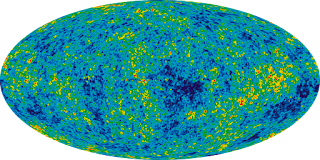 |
| Leonard Nimoy as Mr. Spock |
One
of the ways in which science advances is by building models,
which are often made up of more or less complex sets of mathematical equations,
and trying to verify whether or not these models adapt to the functioning of
the real world, as described by our senses and our instruments.
When
building and using a model we must consider two distinct phases:
- Model adjustment: it consists of assigning values to the
parameters of the model to ensure that it fits the data we already have
about the real world. A model not adjusted to such prior knowledge would
be totally useless.
- Model validation: it consists of using the model to make surprising
predictions that nobody could have foreseen without the help of
the model. If these predictions are confirmed, they become surprising accurate predictions, validating
the model. However, the validation is never final, for a new surprising
inaccurate prediction could invalidate it in the future.
Let's
look at a few examples:
- Newton's theory of universal gravitation was adjusted to explain Kepler's three
experimental laws, which had been known since the early 17th century. The
value of G, for example, was adjusted so that these laws were correctly
predicted by the model. But Newton's theory was not considered valid until
it made several surprising accurate predictions,
the most spectacular of which was the prediction of the existence of the
planet Neptune by Adams and Le Verrier. The bad news: shortly after its
great success, came its great failure: the surprising
inaccurate prediction made by Le Verrier about the
existence of an unknown planet (Vulcan) between Mercury and the sun, which
(we know today) only exists in the Star Trek series, as Mr. Spock claims to
have been born in that nonexistent planet. This prediction made it
necessary to replace Newton's theory by a more approximate model.
- Einstein's theory of general relativity was adjusted to explain everything that
Newton's theory had predicted correctly, and to correct what it had predicted
incorrectly. It was considered validated when it made two surprising accurate predictions: the
deviation of light when passing near a large mass (such as the sun),
confirmed by Eddington in 1919, and the gravitational redshift of
sunlight, checked in 1959. There have been others, such as the existence
of gravitational waves. So far, this theory has not resulted in any surprising
inaccurate prediction, so it remains valid.
- The Big Bang theory, devised by Georges Lemaître in 1931, was
adjusted to explain the
Hubble-Lemaître law, discovered by Lemaître four years before, and by
Hubble two years after Lemaître. In 1948, George Gamow, Ralph Alpher and
Robert Herman made two surprising predictions from this
theory: the average composition of barionic matter in the cosmos, and the
existence of a cosmic background radiation. Both were confirmed (and
therefore became surprising
accurate predictions) during the 1960s, which made the Big
Bang theory the only cosmological theory valid at that time.
- The standard cosmological model, formulated at the beginning of the 21st
century. Its six independent parameters have been adjusted so that the
theory correctly explains the acoustic waves detected in the cosmic
background radiation, which were known before the model was formulated. In
fact, five of the parameters have been adjusted to make the sixth (the
curvature of the universe) as close as possible to zero (flat
universe). However, this theory has not been validated, and is
currently in the situation in which general relativity was between 1915
and 1919 (i.e. it’s a well-adjusted theory, but not a validated theory).
 |
| The cosmic background microwave radiation |
Can the
standard cosmological theory be validated? Has it made a surprising prediction
that we can confirm? Yes, it has. It predicts that the universe contains
something (we don't know what it is, thus call it dark
matter) with a mass five times greater than that of the baryonic
matter we know. If in the future dark matter were indeed discovered, and if its
mass were exactly as expected, the standard cosmological theory would be
validated... for the time being, until another surprising prediction
(perhaps the existence and value of dark energy)
would prove to be false. Then we should find another model to replace it. In
fact, there is already one out there, called MOND (Modified Newtonian Dynamics)
that claims not to need the dark
matter hypothesis to explain the movements of galaxies.
This is how science advances.The same post in Spanish
Thematic Thread on Standard Cosmology: Previous Next
Manuel Alfonseca
No comments:
Post a Comment